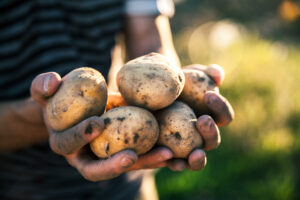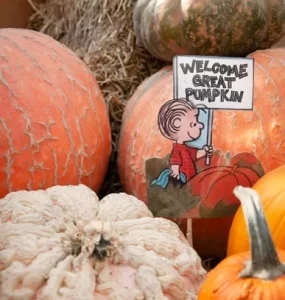Raspberries 101
by Rob Sproule
Fresh raspberries and ice cream is one of summer’s sweetest delights. For the number of people who adore raspberries, it’s surprising that more aren’t growing them.
Granted, they have a quirky way of growing. They aren’t as immediate as strawberries, which you just plant-and-pick. Quirky doesn’t mean difficult, though. Raspberries are hardy as a rock, they thrive on neglect, and few berries are as downright delicious.
If you’ve been judging how they taste on what you buy in the store, you’ve gotta give home-grown a try. You can graze, add to deserts and cereal, make jam, wine, and raspberry lemonade or a hundred other uses.
Getting Started
Raspberries spread (and yield) by suckering, so it’s best to plant them in a configuration encouraging that. I suggest a clump with the plants about 10 plants per square metre. If you want containment, surround the patch with lawn so suckers trying to jump the fence get mowed. Don’t lay fabric down, of course (which means you’ll need to do some light weeding).
In gardening lingo, the phrase “thrives on neglect” is another way of saying that they don’t like wet feet. Choose a well drained spot (keep walking if there’s a puddle there), with plenty of sun and air circulation. They’ll thrive where the ants play but not where the moss grows. They’re prone to root diseases so avoid planting them where you’ve recently grown strawberries, tomatoes, potatoes, or eggplant.
Enrich the top foot of the soil with rich organic goodness like compost or bagged manure. Make sure the soil is well drained, and allow to dry a fair bit between waterings. The exception to this rule is when they’re flowering and fruiting, when you’ll want to keep them watered to avoid bitter fruit.
Dig a big hole to plant small canes. Plant them 3-4 cm deeper than their crowns and spread the roots out gently over the bottom of the hole.
How They Grow
Don’t expect fruit the first year if you buy a young plant. The first year, the canes (called Primocanes for the plant geeks) will to full height but don’t flower. They flower/fruit on second year canes (called Floricanes), after which the cane dies.
While the canes are biannual, the roots are perennial. Snip the canes off at ground level after flowering and suckers will pop up from the crown (ie. new canes). You can wait until the canes turn brown to remove them, but snipping second year canes encourages suckering.
After a few years your raspberry clump will start to get dense. Keeping up on removing old canes will help ward off fungal diseases caused by lack of air circulation.
Expectations
If your cane flowers in the first year (ie. you bought an established plant) snip off the blooms. Make the first year about growing and not fruiting.
You’ll get a few berries the second year but the big harvests won’t begin till the third summer. It’s worth the wait, and with raspberries producing madly for over a decade, there’s plenty of abundance ahead.















